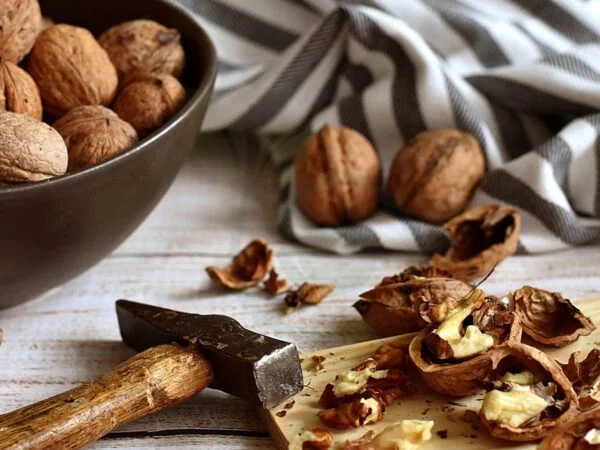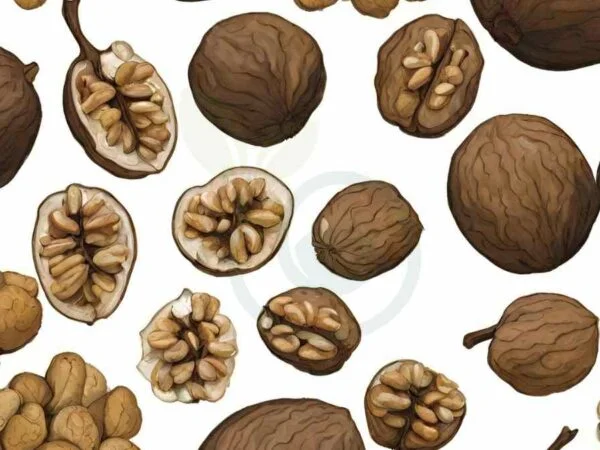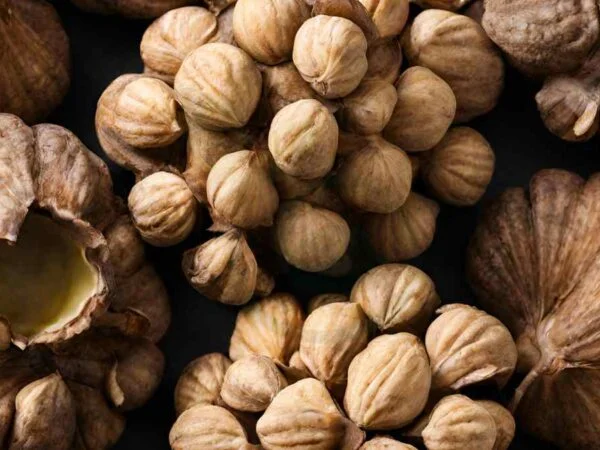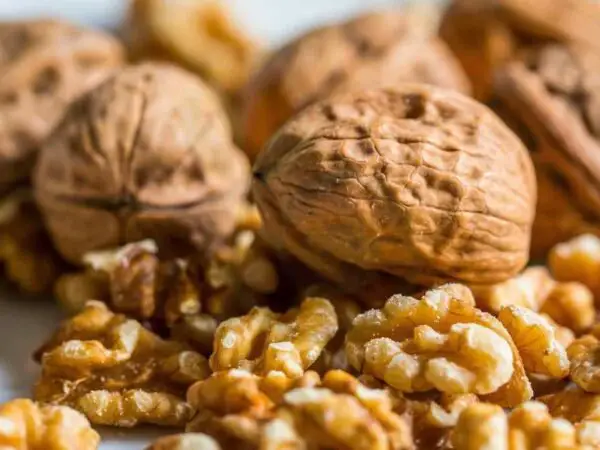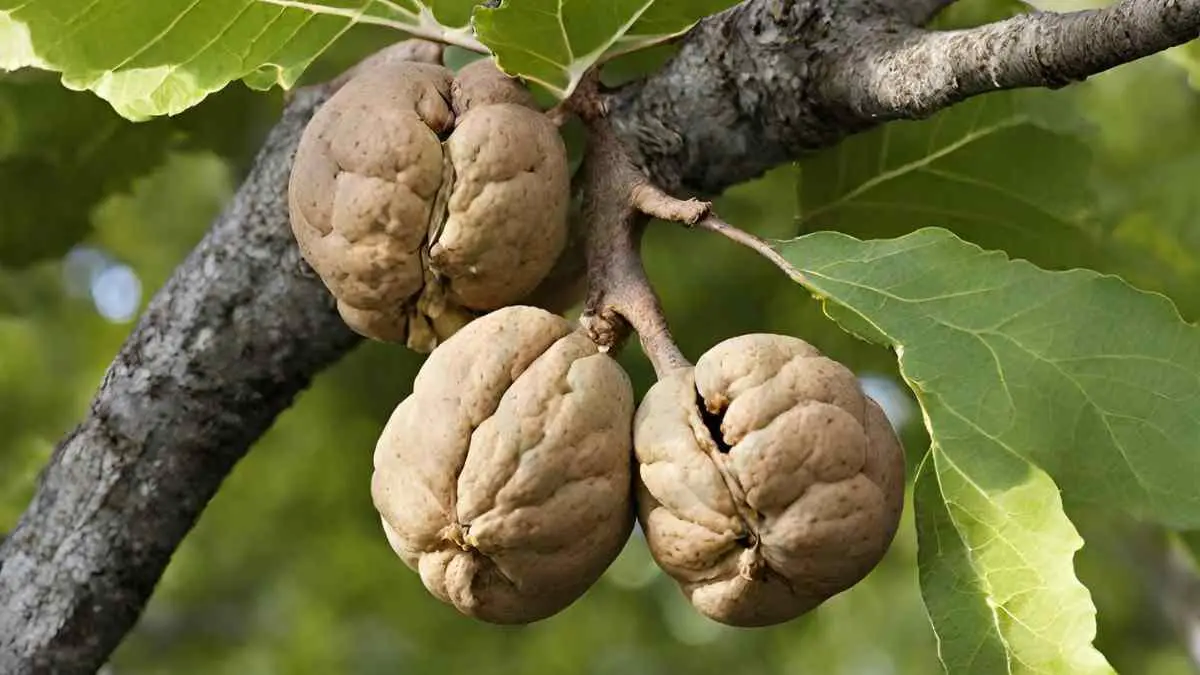
Black walnuts are utilized in various ways, from culinary to medicinal purposes. If you're wondering what black walnuts are used for, you're in the right place.
Black walnuts are highly prized for their rich, distinctive flavor, making them a popular ingredient in baking and cooking. They are often used in recipes for cakes, cookies, and bread, adding a nutty taste and compounds. Additionally, black walnut wood is valued for its strength and attractive grain, commonly used in furniture making and woodworking projects. Medicinally, black walnuts have been used traditionally to treat various ailments, including fungal infections and parasitic infestations.
There's much more to research and discover about the versatile uses of black walnuts, from their historical significance to modern applications in cuisine and wellness.
Key Takeaways
- Utilize Black Walnuts: Incorporate black walnuts into your cooking and baking for a unique and flavorful twist.
- Explore Versatility: Discover the various ways black walnuts can be used beyond culinary purposes, such as in crafts and natural dyes.
- Master Cracking Techniques: Learn effective methods to crack black walnuts to access their delicious kernels.
- Optimal Drying and Curing: Ensure proper drying and curing of black walnuts to enhance their flavor and longevity.
- Benefit from Nutritional Value: Embrace the nutritional benefits of black walnuts, rich in omega-3 fatty acids and antioxidants.
- Support Wildlife: Consider the impact of black walnut trees, view nuts on wildlife and ecosystems when harvesting or planting them, as they may affect the environment.
Black Walnut Basics
Harvesting Techniques
Identify ripe black walnuts by their yellow-green husks. Use gloves to protect hands from staining. Dry in a well-ventilated area.
Processing Methods
Crack open black walnuts with a hammer or nutcracker. Separate kernels from shells manually. Grind into fine powder.
Storing Best Practices
Store black walnuts in cool, dry place for freshness. Use airtight containers to prevent moisture exposure. Keep away from strong-smelling foods.
Culinary Delights
Cookies and Cakes
Incorporate chopped black walnuts into cookie dough to add extra crunch and a distinctive earthy flavor. Utilize ground black walnuts in cake batters for a rich nutty taste that enhances the overall texture. Try using black walnut flour as a gluten-free substitute in various baking recipes for a unique twist.
Pies and Pesto
Create a savory black walnut pesto by blending black walnuts with basil, garlic, and olive oil for a flavorful sauce. Bake delicious black walnut pies, featuring a buttery crust that complements the nutty filling perfectly. Elevate the taste of your pesto by toasting black walnuts beforehand, intensifying their flavor before mixing.
Tea and Liquor
Infuse hot water with black walnut leaves to create a soothing herbal tea known for its calming properties. Experiment with crafting homemade black walnut liqueur, offering a distinctive and unconventional beverage choice. Combine black walnut extract with spirits to craft flavorful cocktails that boast an earthy undertone.
Beyond the Kitchen
Walnut Dye
Boil black walnut hulls to extract natural dyes for fabrics. Use different mordants to achieve various colors. Experiment with tie-dye or dip-dye techniques for creative projects.
Natural Ink
Create homemade ink by mixing black walnut hull extract with vinegar. Write with black walnut ink using a quill or brush on paper. Explore different concentrations for varying shades.
Tinctures
Prepare black walnut tinctures by steeping crushed hulls in alcohol. Strain tinctures after weeks for concentrated herbal extracts. Utilize tinctures for potential health benefits.
Walnut Syrup
Boil black walnut sap to make flavorful syrup. Drizzle over pancakes or waffles for a unique taste. Experiment by adding spices like cinnamon or nutmeg to enhance the syrup.
Cracking Techniques
Efficient Methods
- Optimize black walnut processing by using a nutcracker with adjustable settings. This allows for precise cracking without damaging the nuts inside.
- Streamline harvesting techniques by organizing tools and equipment beforehand. Having everything in place saves time and effort during the process.
- Implement storage solutions that maximize shelf life and minimize wastage. Consider storing black walnuts in a cool, dry place to maintain freshness.
Drying and Curing
Techniques Overview
Harvesting black walnuts involves collecting the nuts once they fall from the tree, wearing gloves to prevent staining. Processing includes hulling the green outer covering, which can be used for natural dyes. After hulling, drying the nuts is crucial to prevent mold growth.
Storing black walnuts requires curing them for several weeks in a dry, well-ventilated area. Utilize a dehydrator or oven set at low temperatures to speed up the drying process. Once dried, store black walnuts in airtight containers to maintain freshness and flavor.
Efficient techniques play a vital role in maximizing the benefits of black walnuts. Properly dried and stored nuts retain their nutritional value and flavor for extended periods. Utilize cured black walnuts in various applications such as baking, cooking, or as toppings for salads and desserts.
Nutritional Insights
Health Benefits
Black walnuts offer potential antibacterial properties, aiding in combating certain infections effectively. The antitumor activity associated with black walnut extractives shows promising results in inhibiting tumor growth. Scientific evidence supports the nutritional analysis findings of black walnuts, highlighting their rich content of essential fatty acids for overall health benefits.
Side Effects
Excessive consumption of black walnut extract, like nuts, may lead to potential risks such as digestive issues or liver damage. Allergic reactions can occur in some individuals, emphasizing the need for caution when consuming products containing black walnuts. Moderation is crucial to avoid adverse effects and maximize the benefits of incorporating black walnuts into the diet.
Creative Uses
Homemade Crafts
Incorporate black walnuts into DIY projects like wreaths or ornaments. Create natural dyes from black walnuts for fabric coloring. Explore crafting ideas using black walnut shells for decorative purposes, nuts.
Alternative Remedies
Explore the traditional use of black walnut extract as a natural remedy. Discuss the potential benefits of black walnut tinctures for holistic health. Highlight the versatility of black walnuts in alternative medicine practices.
Wildlife Challenges
Outsmarting Squirrels
Squirrels pose a significant challenge to black walnut trees, threatening the harvest of nuts. To protect these trees, implement strategies such as using netting or motion-activated devices. These deterrents effectively discourage squirrels from damaging the valuable black walnut trees.
Consider planting companion plants around black walnut trees that naturally repel squirrels. This not only protects the trees but also creates a beneficial environment for other wildlife in the area. By employing these tactics, you can successfully outsmart squirrels and safeguard your black walnut trees.
Seasonal Tips
Best Harvesting Times
Harvest black walnuts when the husk turns from green to yellowish-green and starts to soften. Check for firmness by pressing the husk with your thumb. Monitor weather conditions closely to choose the best days for harvesting, ensuring dry weather for better quality nuts. Plan your activities during late summer or early fall, which is the peak ripening season for black walnuts.
Seasonal Storage Tips
Adjust your storage practices based on seasonal temperature changes to maintain walnut quality. Rotate stored black walnuts regularly to prevent mold growth and ensure freshness throughout the year. Consider utilizing different storage methods like freezing in airtight containers or vacuum sealing for long-term preservation.
Summary
In exploring the versatile uses of black walnuts, you've learned about their culinary applications, nutritional value, and creative possibilities beyond the kitchen. Understanding cracking techniques, drying methods, and seasonal tips has equipped you with the knowledge to make the most of these nutritious nuts. Recognizing the challenges they pose to wildlife sheds light on the importance of responsible harvesting practices.
To fully embrace the potential of black walnuts in your daily life, consider incorporating them into your cooking, baking, and even crafting projects. Share your newfound knowledge with others and encourage sustainable practices when handling these unique nuts. By taking action and experimenting with different uses, you can truly appreciate the richness and benefits that black walnuts bring to your table.
Frequently Asked Questions
What are the basic uses of black walnuts?
Black walnuts are primarily used in cooking and baking due to their rich, earthy flavor. They can be added to salads, desserts, and main dishes for a unique taste profile with nuts. They are popular in making homemade nut butter.
How can black walnuts be utilized beyond the kitchen?
Apart from culinary purposes, black walnuts have various non-food uses. They are commonly used in natural dyes, as an ingredient in skincare products like exfoliants, and even as a natural insect repellent due to their strong scent.
What are effective techniques for cracking black walnuts?
To crack black walnuts efficiently, consider using a hammer or nutcracker. Place the walnut on a hard surface and gently tap it until it cracks open. Another method involves using a vise grip to apply pressure until the shell breaks.
How should black walnuts be dried and cured for optimal use?
After cracking open the nuts, spread them out in a single layer on a tray or screen. Allow them to air dry for several weeks in a cool, well-ventilated area. This process helps enhance their flavor and texture for consumption or storage.
What nutritional benefits do black walnuts offer?
Black walnuts are packed with nutrients such as omega-3 fatty acids, antioxidants, fiber, protein, and essential minerals like magnesium and phosphorus. Consuming them can support heart health, brain function, and overall well-being due to their nutrient-rich profile.
Image Source: Paid image from CANVA

